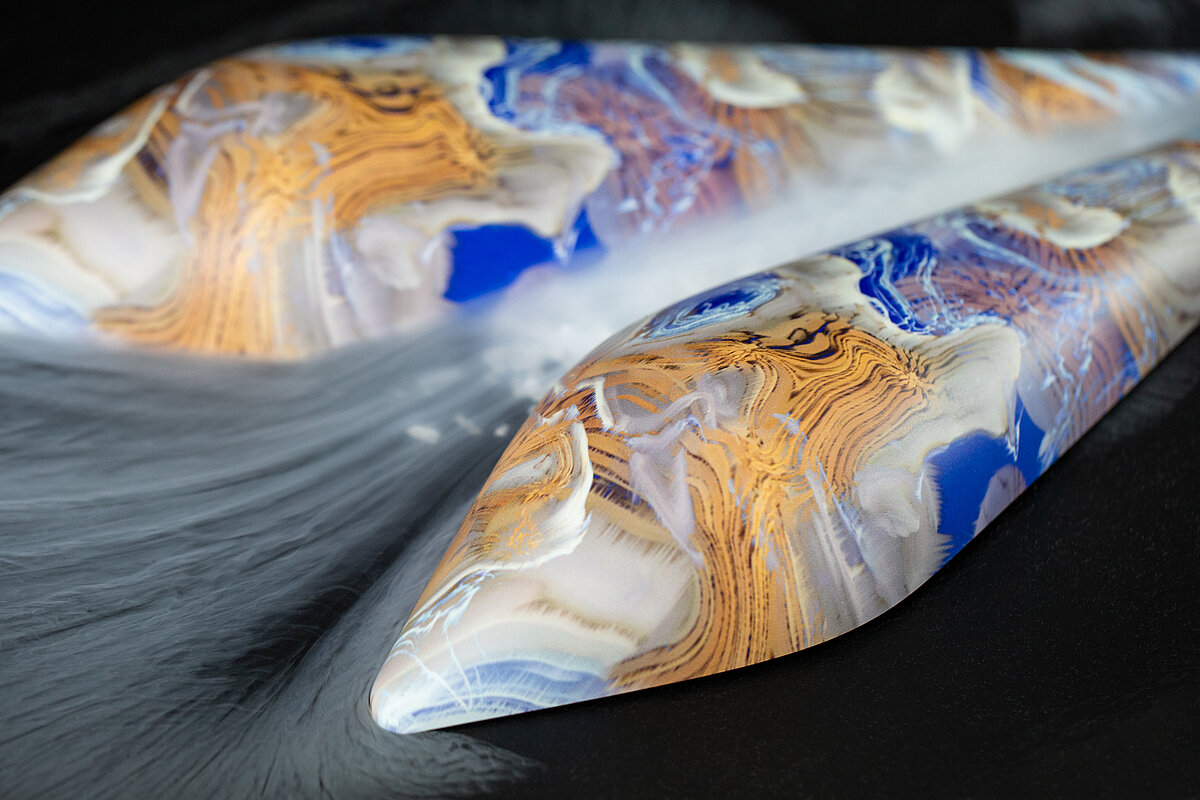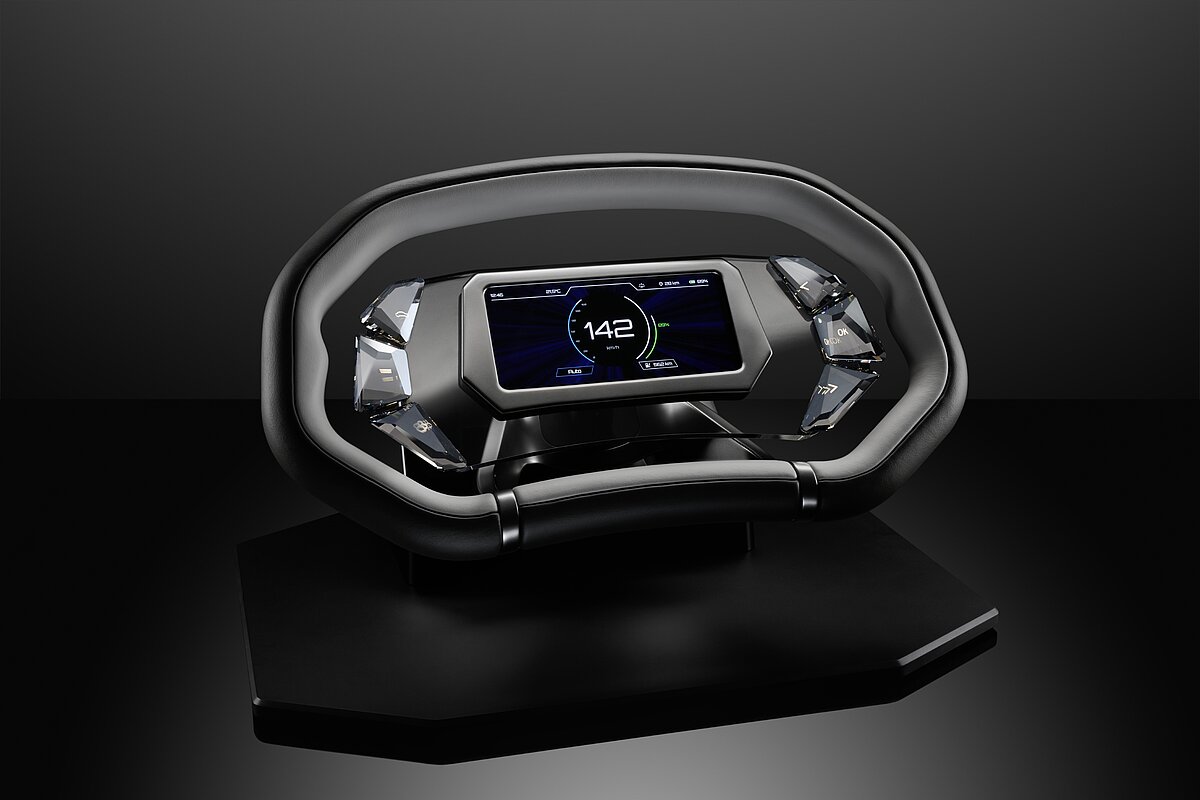

Driving has long been much more than just getting around. It’s a task that we want to experience with all our senses. Appearance, sound, and haptics merge to give each vehicle its own character. At the same time, we are striving for more sustainability in mobility. LEONHARD KURZ is working intensively on new design solutions that are in demand in view of this change.
At the beginning of 2023, more than one million purely electrically powered vehicles were on German roads for the first time, as reported by the Federal Environment Agency. This means that the number of registered e-cars has tripled in the last two years. Electromobility is already a pioneering concept for the automotive industry - and brings with it special challenges. After all, on the one hand, the complex architectures of battery-powered vehicles require new technical solutions. On the other hand, completely different aspects are of interest to us today than they were just a few years ago. When we get into an electric car, it’s with the expectation of a wow effect: Is there an augmented reality head-up display in the car? Can I use ambient light to create an atmosphere that perfectly fits my mood? Are invisible touch keys hiding behind the smooth surfaces? We expect refined elegance, smart technology, and a touch of luxury - all bundled to create a unique driving experience.
E-mobility is just the beginning. Another topic that will fundamentally change the way we think about and experience driving in the future: Autonomous driving. It’s been almost 20 years since Will Smith raced through the streets of the futuristic Chicago in “I, Robot” in a self-driving Audi. At that time still completely utopian, this vision appears to be easily realizable today. And that leads to the question: Will cars of the future be mobile living rooms in which we can lean back and be comfortably taken from A to B? In which we are entertained through virtual and augmented reality instead of looking at the road? For Luitpold Haarländer, Global Head of Sales Management Automotive Business Area Plastic Decoration at LEONHARD KURZ, this idea is not at all absurd: “Vehicles are already much more than ‘just’ a means of transport today - and in the coming years, they will increasingly develop into a living space. When well-being comes first, we need to reinterpret mobility. We must be prepared to try out completely new approaches that also take into account the desire for more sustainability. That is exactly the job of our Visionary Design team.”
Of course, this raises the question: How exactly should we imagine sustainable visionary design when it comes to the design of surfaces? KURZ is giving a demonstration at this year's IAA Summit as part of the Spacewood Experiment pilot project - a collaboration between international designers who were tasked with creating a completely new interpretation of wood as a resource. Michael Ucke, Head of Visionary Design at LEONHARD KURZ, explains: “It's about forgetting everything we know about wood and embarking on an imaginary journey into space. What does wood look like on other planets, how does it feel? By thinking outside the box and finding new inspiration, we can create spectacular surfaces with experimental designs, colors, and structures.”

Luitpold Haarländer knows exactly how sustainability comes into play here: “Sustainability is a driving force in the automotive industry today and is becoming increasingly important. In this context, too, it’s important to look to the future. From body components with flax fibers to upholstery fabrics made of cactus - there are more and more alternatives to conventional materials. Recycled, recyclable, and bio-based raw materials are a must, which is why we also made the Spacewood Experiment collection entirely from recycled materials. In this way, we are showing the automotive industry ways to implement attractive and at the same time sustainable designs.”
The other major trend affecting interior design is the fusion of design and technology. While in the past functional and decorative components were clearly separated from each other, today these boundaries hardly exist. “On the one hand, we are observing a development towards large decors and seamless, closed surfaces with integrated intelligent functions and Shy Tech design,” explains Haarländer. “On the other hand, control elements are increasingly being designed in an appealing and individual way, so that they themselves become eye-catchers. Here, too, it is advisable for manufacturers and brand owners to think in new directions and, above all, to choose unconventional approaches.”
Current developments in Asia, for example, show that a new perspective is needed in the luxury segment in particular. Last year, Porsche reported that more than half of its vehicles sold in China were owned by women. Design collaborations can give impetus to automotive design and meet the needs of this growing target group. KURZ presents the perfect example in cooperation with Swarovski Mobility. At the IAA Summit, both companies are presenting a steering wheel design concept that is not only equipped with an integrated HMI display but also with operable Swarovski crystals. “With its light colors and integrated crystals, the steering wheel reflects the lightness that is finding its way into automotive design as e-mobility becomes more widespread,” says Jörg Stierand, Head of Divisional Sales Management Automotive at LEONHARD KURZ, and continues: “Furthermore, the concept underpins the fact that, with the help of innovative interior solutions, almost every material and every component in the cockpit can become a design element.” The solid-cut crystals with their depth effect can be color-matched to the interior of the vehicle and have a scratch-resistant surface. Thanks to highly transparent sensor technology from the KURZ subsidiary PolyIC, including backlighting and Shy Tech design, they can be equipped with smart functions that only become apparent when the user approaches or touches them.

“If you look at the current developments and future trends in the automotive industry, we can say - in a nutshell - that design will continue to gain in importance in the coming years," explains Luitpold Haarländer. “It’s essential for OEMs to think outside the box and dare to try something new - be it in the design of sustainable decorative and functional surfaces or in the development of control elements that are characterized by an extraordinary look with a wow effect.”
You're in the right place! Just drop us a message. How can we help?